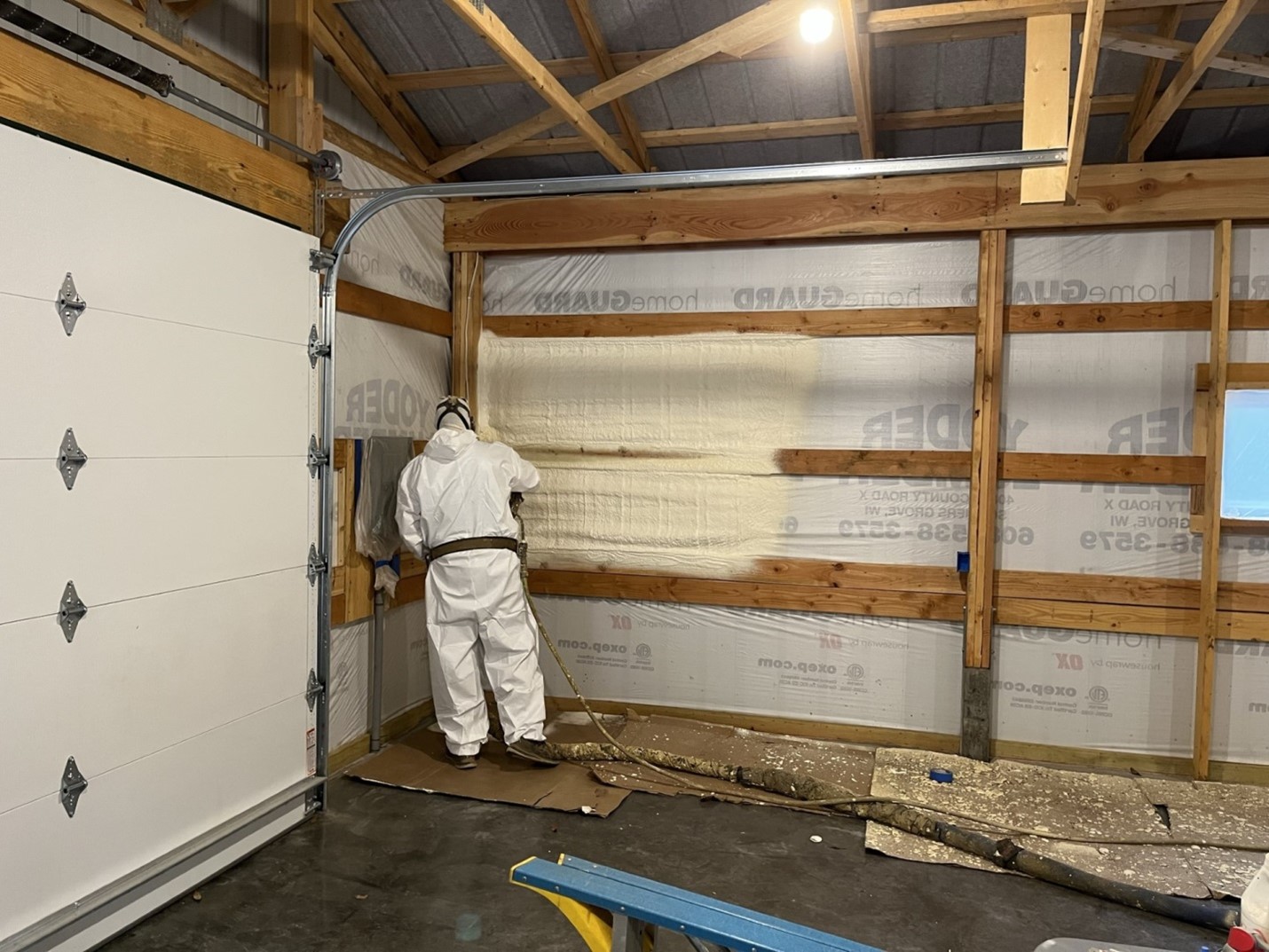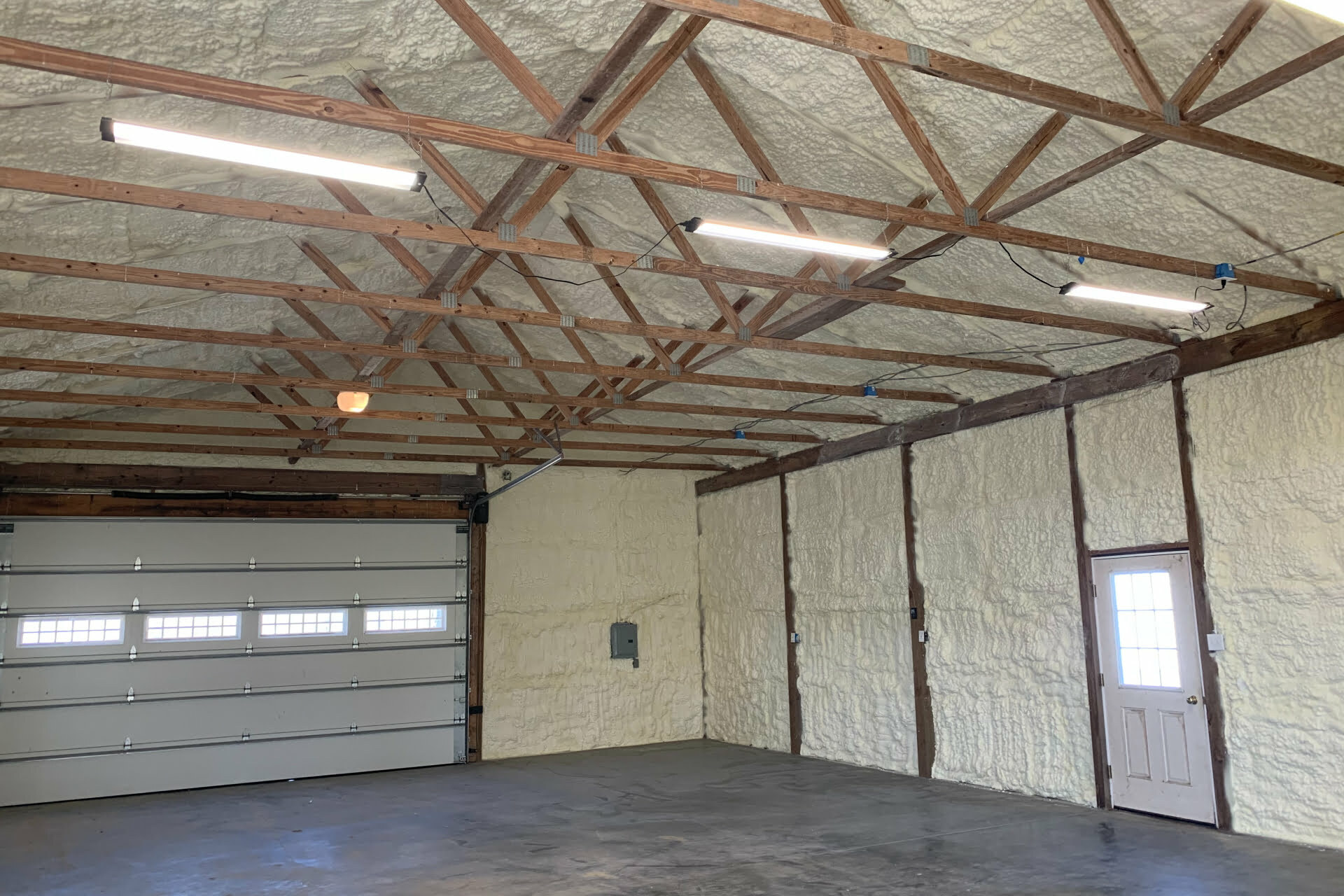Spray foam insulation has become a practical solution for a wide range of agricultural buildings. In barns—where dust, humidity, temperature swings, and animal-generated moisture pose constant challenges—standard insulation methods often fail to perform over time. Spray foam, when selected and applied properly, offers strong thermal resistance, structural support, and a high tolerance for demanding conditions.
This article focuses on proven spray foam methods that hold up in harsh barn environments, where livestock, equipment, and varying weather conditions put insulation to the test. You’ll learn how to evaluate different spray foam products, identify the right installation techniques, prevent common performance issues, and make informed choices to extend the lifespan and efficiency of your barn’s structure.
Challenges of Barn Environments for Insulation
Barns are subject to different environmental and operational stressors than homes or commercial buildings. The insulation must deal with moisture, dust, temperature extremes, animal activity, and mechanical ventilation systems—all of which can wear down or compromise traditional materials.
Common Environmental Stress Factors
Barn interiors are rarely climate-controlled and often involve daily exposure to:
- Humidity spikes from livestock respiration and manure.
- Condensation and water exposure due to roof leaks, wash-downs, and seasonal shifts.
- Rodent activity and pest problems.
- Dust and ammonia that can corrode or degrade common insulation.

The Shortcomings of Traditional Insulation in Barns
Materials like fiberglass and cellulose absorb moisture and are prone to sagging, mold, and pest damage. Once compromised, they lose effectiveness and can become health hazards or lead to structural damage. These issues are frequent in barns with poor air sealing and irregular maintenance.
Why Spray Foam Performs Well in Agricultural Settings
Spray foam forms an airtight, seamless barrier that resists moisture, deters pests, and adapts well to irregular surfaces common in barns and pole buildings. Its ability to both insulate and seal gaps makes it a versatile option.
Closed-Cell Spray Foam: Best for Durability
Closed-cell spray foam is often the go-to option for barns because:
- It has higher R-value per inch (approx. R-6.5 to R-7).
- Acts as both a vapor barrier and air barrier.
- Adds structural strength to walls or ceilings.
- Resists moisture absorption and doesn’t support mold growth.
Open-Cell Spray Foam: Where It Still Works
Open-cell spray foam is sometimes used in attics or hay storage areas where:
- Cost savings are important.
- Moisture exposure is minimal.
- Sound absorption is more of a priority.
However, it’s not suitable for high-moisture or contact-prone areas.
Application Techniques That Increase Longevity
Even the best spray foam won’t perform well without proper application. Mistakes in prep, product choice, or application method often lead to early degradation, shrinking, or detachment.

Surface Preparation is Key
Before applying spray foam:
- Remove existing insulation and clean the surface of dirt, rust, and oil.
- Check for active leaks and allow surfaces to dry completely.
- Ensure mechanical ventilation is properly adjusted before sealing the space.
Correct Thickness and Layering
Over-applying foam in a single pass can trap heat or cause improper curing. Proper approach:
- Closed-cell foam is best installed in 1-inch passes.
- Wait between layers to allow each to fully expand and cure.
- Target 2-3 inches on walls, and up to 4 inches on ceilings in colder regions.
Common Errors and How to Avoid Them
Barns present challenges that can tempt shortcuts during insulation work. Misapplication or neglect can lead to costly damage or poor performance.
Applying Over Wet Surfaces
Spraying over wet or damp materials reduces adhesion and promotes foam failure. Always check moisture levels—moisture meters can be used for wood framing.
Ignoring Ventilation Design
Spray foam reduces air exchange, which can be beneficial—but without adapting the barn’s ventilation, it may trap ammonia and humidity, affecting animals and insulation lifespan.
Failing to Address Structural Movement
Barns often experience subtle movement due to settling or weather. Failing to plan for this (especially around joints or steel framing) can cause foam to crack or separate.
Comparative Table: Spray Foam vs. Traditional Insulation in Barns
| Feature | Spray Foam (Closed-Cell) | Fiberglass Batts | Rigid Foam Panels |
|---|---|---|---|
| Moisture Resistance | High | Low | Moderate |
| R-Value Per Inch | 6.5 – 7 | 2.9 – 3.8 | 5 – 6 |
| Pest Resistance | Excellent | Poor | Fair |
| Structural Reinforcement | Yes | No | No |
Moisture and Condensation Control
Moisture is the biggest threat to insulation in barns. Spray foam helps by:
- Sealing air gaps that let warm, moist air meet cold surfaces.
- Acting as a vapor retarder when applied in proper thickness.
- Limiting condensation that leads to mold and wood rot.
Tips for Better Moisture Management
- Use ridge vents and eave vents alongside spray foam in enclosed barns.
- Install dehumidifiers or fans for livestock-heavy structures.
- Ensure gutters and downspouts keep water away from framing.
Cost Considerations in Barn Retrofitting
Spray foam is more expensive upfront than fiberglass, but it saves money in long-term energy use and maintenance.
Factors That Influence Costs
- Type of foam (closed-cell is pricier than open-cell)
- Square footage and depth required
- Accessibility of installation areas
- Need for removal of old materials
When evaluating cost, consider the total cost of ownership, including:
- Reduced heating costs
- Fewer repairs
- Longer insulation life (20+ years)
Common Questions
How thick should spray foam be in a barn?
Closed-cell foam should be applied in 2–3-inch layers on walls and up to 4 inches on ceilings for effective insulation. Thicker layers provide better air sealing and moisture control, especially in colder climates.
Can spray foam withstand high humidity in livestock barns?
Yes. Closed-cell spray foam resists water and prevents condensation when installed correctly. It also doesn’t support mold growth and maintains its shape even in high-humidity conditions.
Is spray foam safe for animals in barn environments?
Once fully cured, spray foam is inert and safe. Ensure proper ventilation during application and cure time (typically 24–48 hours) before animals are reintroduced.
Does spray foam prevent rodent infestation?
Spray foam doesn’t attract rodents and blocks many of their typical entry points. However, it’s not rodent-proof—combined strategies such as steel mesh reinforcements are often used in known problem areas.
Conclusion
Spray foam offers long-term insulation performance in barns where other materials fall short. Closed-cell spray foam provides the moisture resistance, thermal control, and air sealing needed for demanding environments. With proper installation and ventilation planning, it can significantly improve durability and energy efficiency while reducing maintenance.
Whether retrofitting an old dairy barn or insulating a new pole barn structure, understanding how spray foam interacts with the barn’s climate and use patterns is critical. By focusing on the right type of foam, correct application methods, and long-term maintenance, barn owners can achieve dependable results.
FAQs
Can spray foam be applied directly to metal barn walls? Yes, closed-cell spray foam adheres well to clean metal surfaces. Ensure the surface is dry, free from rust or oils, and prepped with a primer if needed.
How long does spray foam insulation last in a barn? Properly installed spray foam can last over 20 years. Its lifespan depends on exposure to UV light, moisture control, and mechanical damage.
Should I use spray foam under the barn roof or only on the walls? Insulating the roof with spray foam helps prevent heat loss and condensation drips. Combining wall and roof insulation offers the best thermal performance.
Is it worth insulating an open-air barn? For partially enclosed barns, insulating equipment or animal areas can still reduce drafts and protect temperature-sensitive equipment or feed.
What temperatures can spray foam insulation handle? Closed-cell spray foam remains stable in temperatures ranging from -40°F to over 180°F, making it suitable for all seasons in barn use.
Reviewer: Maria Lopez offered detailed feedback after reviewing this post. Her 10 years of experience in spray foam work helped guide the tone and suggestions toward realistic strategies.









